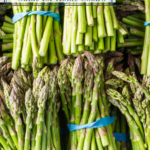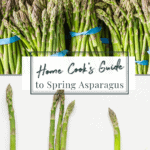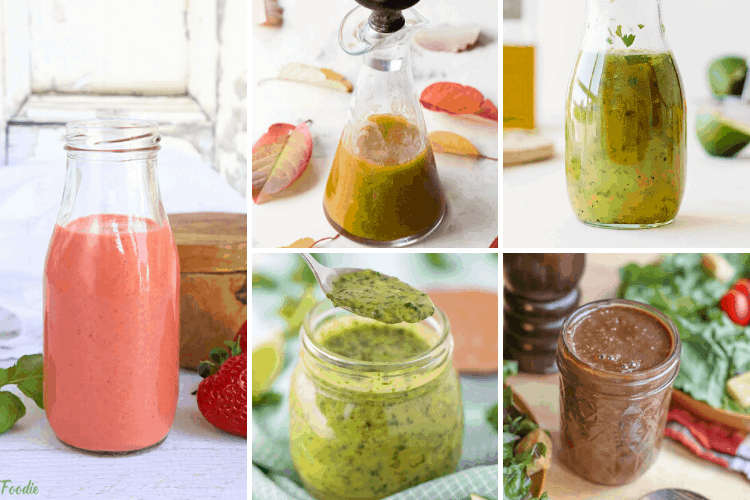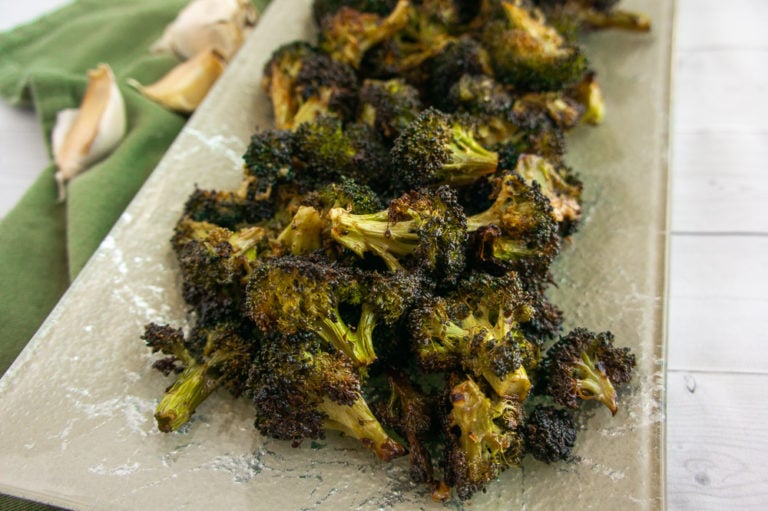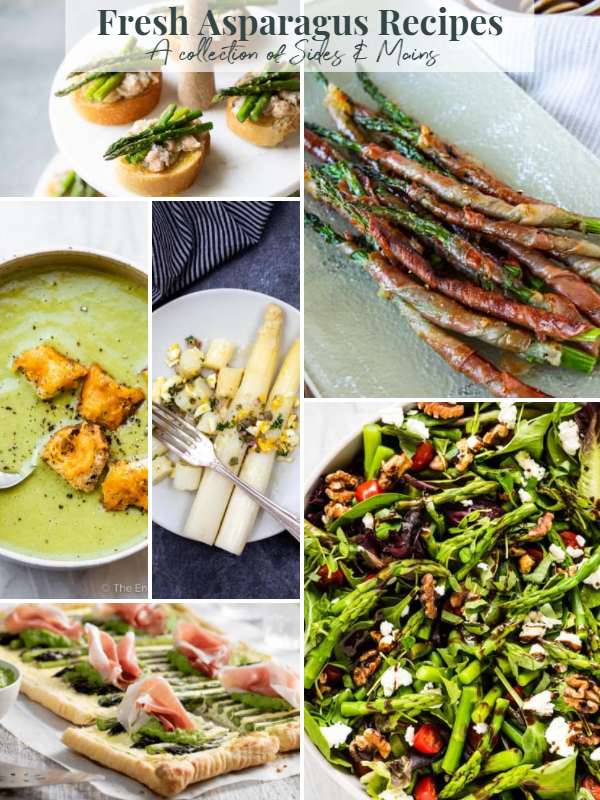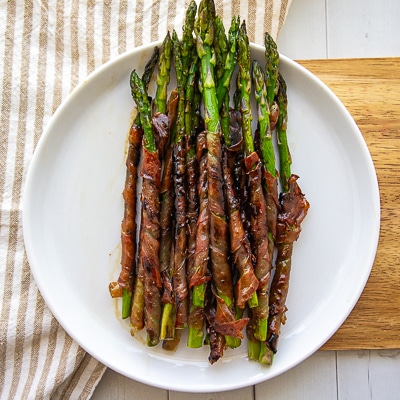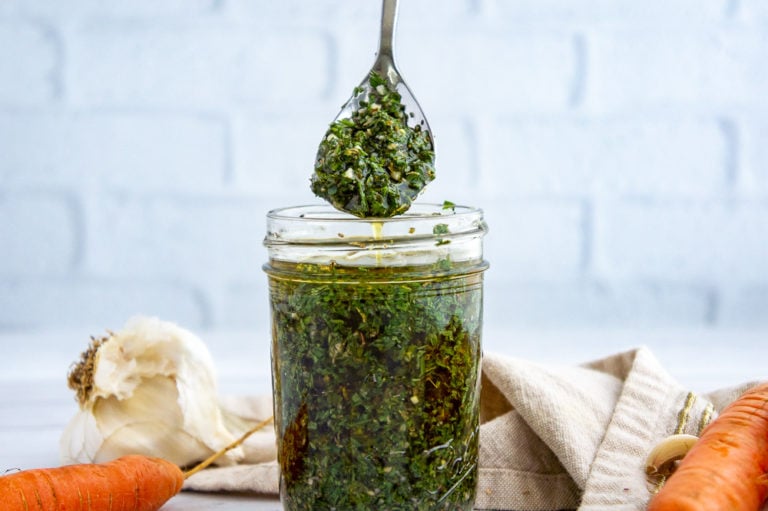Types of Asparagus: A Guide for Home Cook’s
This page contains affiliate links. For more information please read my Disclosure Policy.
In this guide, you’ll discover all the info a home cook needs about the types of asparagus, how to prepare it, what goes well with it, and much more.
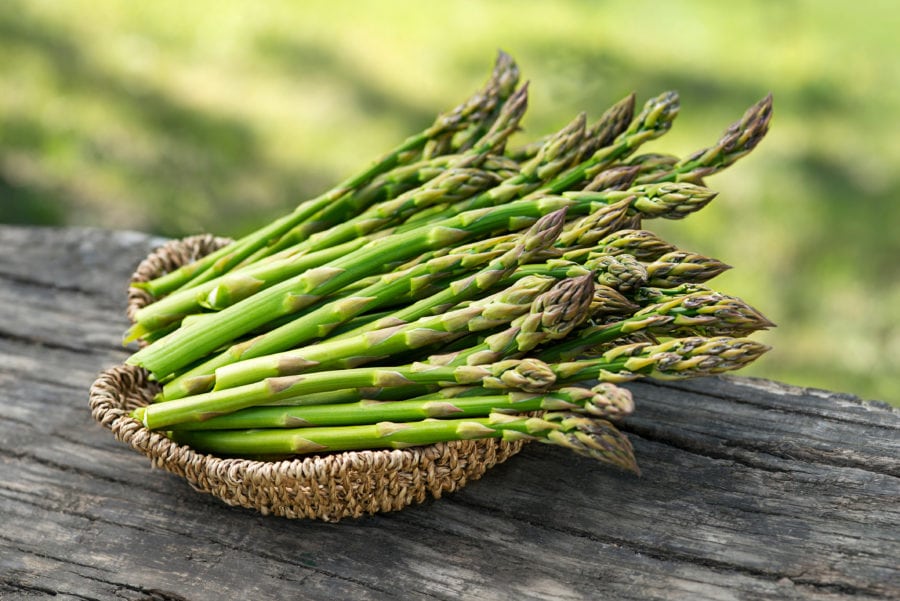
When spring rolls around I’m more than ready to move on from winter produce to the lighter, more delicate flavors of the season. Asparagus has easily become one of my all-time favorite ingredients to use. It cooks quickly and can be used in a variety of different preparations, but also because it’s just tasty.
In this guide I’m sharing everything I’ve learned over the years of shopping for good, fresh spring asparagus. I’ve included tips on different varieties you can use, how to prepare it, and some delicious flavor pairings.
Types of Asparagus
There are four different types of asparagus the home cook might encounter. I hesitate to say asparagus ‘varieties’ because we’re not talking about growing it, and most asparagus at the store is categorized in a much simpler way.

- Green Asparagus – By far the most common and familiar, green stalks are the bulk of what we consume here in the US. They can be thick or thin (more on that later) and are full of nutrition. Fiber, Vitamins B and C, folic acid, potassium and calcium are just a few of the benefits they can bring to your diet.
- Purple Asparagus – If you happen to see a bundle of purple stalks at your local market, grab it! Purple varieties tend to be sweeter, a bit nuttier, and just as healthy. They’re also more tender than the green varieties, though be warned, the color will fade as they cook.
- White Asparagus – Pure white asparagus can sometimes be found here in the US, but they’re favored in Europe. The lack of color is created by blocking the stalks from sunlight and that extra effort often means an extra few dollars in cost for us. They’re sweeter than green asparagus, but woody, and will need peeling to be tender enough to eat.
- Wild Asparagus – I’m throwing this one in for kicks and giggles if I’ve got any foraging lovers reading along. In the coastal areas of the US, wild asparagus grows tall and thin, and is apparently very sweet and tender.
A word to the wise however, as with ALL wild harvested foods, be careful and certain, so you don’t accidentally pick up something toxic. Here’s a good post on how to forage for it, if you’re into it!
Thick Vs. Thin Stalks – Does it Matter?
There are some pretty varied opinions out there. I used to believe thin stalks were more tender, and thicker ones more fibrous. But according to Cook’s Illustrated, the thinner asparagus has more concentrated fibers which makes it tougher.
That’s fine and dandy to say, but I’ve had plenty of tough spears that were thick too.
Here’s my 100% honest, experience based opinion – buy what you like based on how quickly/how you want to cook it.
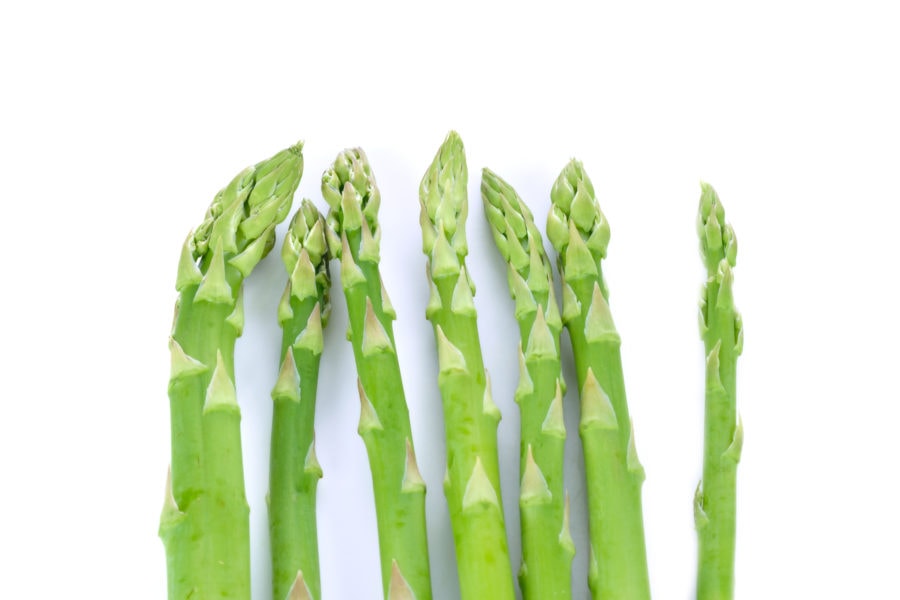
As a fun fact, thicker does NOT mean older. Asparagus is a perennial (grows back from the same plant every year) and sometimes year two or three means thicker stalks. But mostly it’s just a matter of variety!
What to Look For When Buying Asparagus
With the thick vs. thin asparagus bias busted, the matter of how to choose the best looking bundle still remains. How do you know which is good, if size doesn’t matter?
Texture all the way. The first thing I look at is the tips. They should be dry and tight (closed). They should NOT be mushy, soggy, or look like an blooming flower. If they are, put it down.
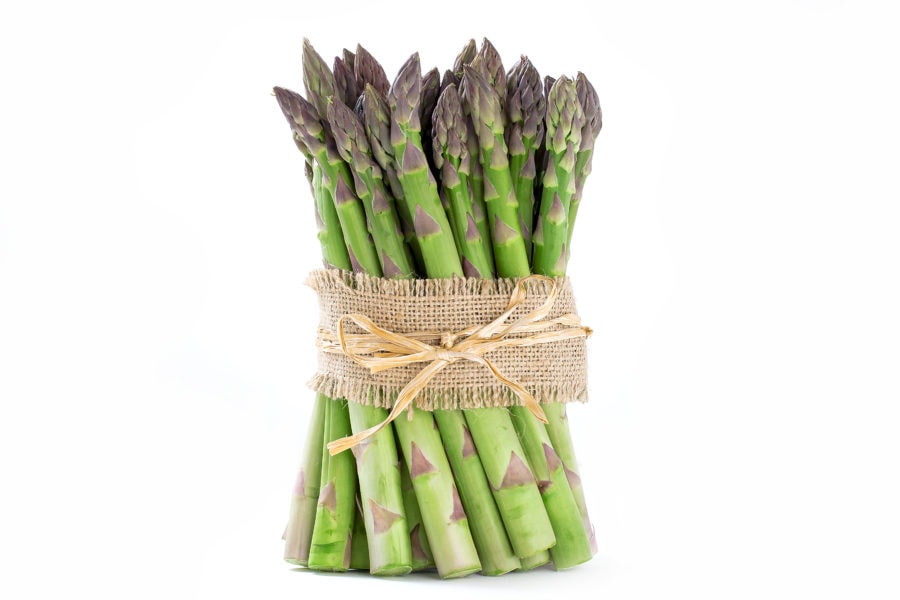
Second, check out the stalks. They should be firm and smooth. If you see any wrinkles, hard pass.
Finally check out the bottoms. Freshly cut asparagus will be white or pale green, not brown or dry. If you see a few brown bottoms, they can be trimmed so it’s not a deal breaker, but it is a good indicator of freshness.
But WHEN should I buy asparagus?
I’m a big advocate for buying local, in season foods. It’s better for our local economy, better for the environment, and most definitely the best approach to eating highly flavorful foods.
You can get asparagus nearly year round at supermarkets in the US, but they’re often imported from far away and grown out of season. They won’t be the freshest or the most flavorful, and will often be more expensive than in-season veggies that are cheaper due to natural availability.

Asparagus is a spring veggie. The natural season in your region may vary based on local climate, but you can look for it when the trees begin to bud and the worst of the chill has left.
Here in central California, I start to see fresh asparagus in late February and can get it from my local farmers all the way until early May, before the heat comes. Around the US, the peak season is April and May. So eat it in abundance while you can!
Once you get it home, either store it in a damp cotton produce bag, or trim the very bottom ends and keep them upright in a jar of clean water. Either way will keep them fresh for about 5 days in the fridge.
How to Prep Asparagus for Cooking
Time to settle another age-old debate – to snap or not to snap? I’m firmly in the DO NOT SNAP camp, but I’m first to admit that I’ve been guilty of it in the past!
It’s common advice, to grip either end and see where the stalk naturally breaks, I did that for YEARS. But I’ve discovered that it’s 100% not necessary. It’s also ridiculously wasteful, especially considering that asparagus is one of the pricier veggies!

The best approach to trimming the ends is to just cut the bottom. Thicker stalks may need an inch or two removed, while thinner ones need just the very bottom trimmed.
So what about peeling? Here’s the real deal, it’s up to you. There’s rarely a need to peel thin stalks, but thicker ones may benefit from the bottom inch or two being peeled to make them more tender, but it’s not necessary.
Best Cooking Methods for Asparagus
I’m delighted to tell you that there’s no wrong way to cook asparagus, it can even be eaten raw.
For thin stalks I recommend raw, blanched, sautéed, steamed, stir fried, or even quickly grilled.
For thicker stalks, go for roasting, boiling, grilling, or baking.
Have fun experimenting with the many asparagus recipes out there, and you’ll discover your favorites in no time.
Common Flavor Pairings
With that fresh spring asparagus in hand the final question of the day is…what tastes good with asparagus? Great news – TONS of things!
Green asparagus has a bitter and sweet flavor with a bit of grassy nuttiness. The purple and white varieties will have that too, but with more sweetness.
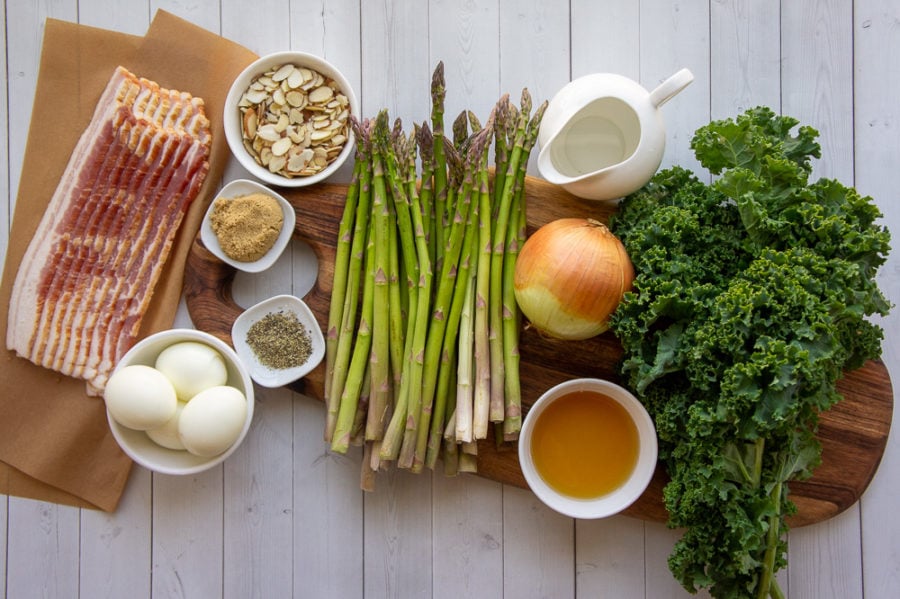
Pair any of them with salty cheeses like Parmesan or Asiago, cured meats like prosciutto or ham, eggs (especially egg based sauces like hollandaise), onions, garlic, lemons, mushrooms, tender herbs like parsley or tarragon, and vinegars.
Some of the most popular ways to use asparagus are in pastas, rice dishes like risottos, and in salads. Or serve it with simple sauces like romesco, alfredo, or mayonnaise/yogurt based dressings.
That’s just the tip of the iceberg though, it pairs well with dozens more ingredients, leaving a big wide world of flavorful cooking open to explore. If you’re looking for immediate inspiration, these recipes for prosciutto wrapped grilled asparagus, Instant Pot asparagus soup, or my asparagus kale salad with bacon dressing are great places to begin.
I hope you’re feeling as inspired by spring produce as I always am, and have fun finding those tasty bundles of fresh asparagus while they’re at their best! Happy Eating!
Nutrition information and cooking times are provided as a best estimate. Values may vary based upon ingredients and equipment.

